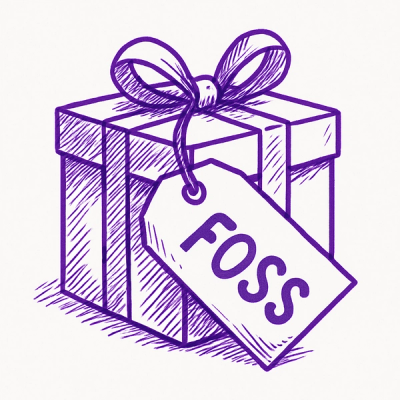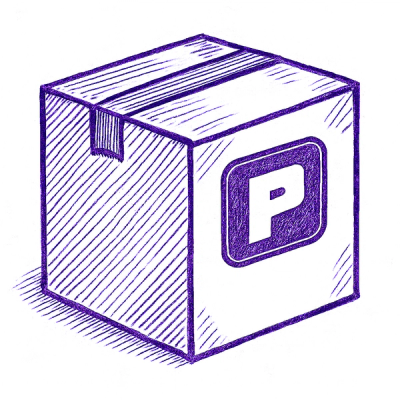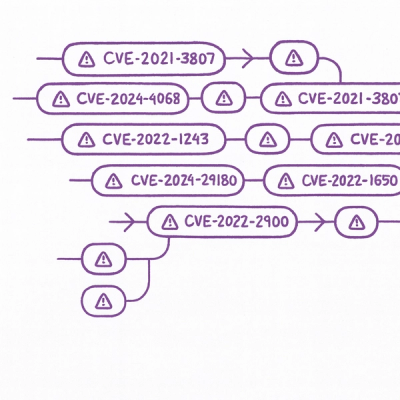
Security News
New Website “Is It Really FOSS?” Tracks Transparency in Open Source Distribution Models
A new site reviews software projects to reveal if they’re truly FOSS, making complex licensing and distribution models easy to understand.
Ruby Library for the screenshotlayer API.
Capture highly customizable snapshots of any website. Powerful Screenshot API for any application
Add this line to your application's Gemfile:
gem 'screenshot_capture'
And then execute:
$ bundle
Or install it yourself as:
$ gem install screenshot_capture
Before using the screenshotlayer API client you have to setup your account and obtain your API Access Key.
You can get it by signing up at https://screenshotlayer.com/product.
All endpoints in the public API is available through this library.
The general API is documented here: https://pdflayer.com/documentation.
You can find parameters, result set definitions and status codes documented here as well.
In the examples directory you can find demos and samples of general usage of all the API functions.
@client = ScreenshotLayer::Client.new( [access_key], [secret_keyword] )
Your unique key that you can find on the dashboard of your account under the screenshotlayer account.
A userdefined private key that you can find on the dashboard of your account under the screenshotlayer account, it's used to encrypt parameters to prevent unauthorised usage of your account.
Boolean value to indicate if the calls to the API should use a secure protocol or insecure (HTTP/HTTPS). Defaults to false (HTTP, insecure).
Takes a URL and returns the captured image.
Second we define an options object. All the options are documented here: https://screenshotlayer.com/documentation
options = ScreenshotLayer::CaptureOptions.new()
We then place the actual call to the API, passing in the URL we wish to capture as PDF and the options we defined above.
response = @client.capture(url, options)
[The binary content of the image file] (Defaults to PNG)
Takes a URL, saves the image to a local file defined by the export argument and returns a response object.
We define an options object, and sets the filename option.
This option is specific to the RubyGem and not documented in the API found on screenshotlayer.
If the directory doesn't exist, it will be created.
options = ScreenshotLayer::CaptureOptions.new()
options.filename = '[local_file_system]/some_directory]/my_file.png'
response = @client.capture(url, options)
{
"success": true,
"info": "The image has been saved to your local file system",
"file_name": "path_to_local_file.png"
}
In the [rootdir]/example directory there is a fully functional application which runs all requests against all the endpoints in the API, the examples above can be seen there as source code.
The example application uses a process.env variable to hold the access key.
The tests are written using the rspec testing library.
RSpec http://rspec.info/
In order to run the tests, the following environment variables needs to be set:
ACCESS_KEY = [access_key]
SECRET_KEYWORD = [secret_keyword]
EXPORT_FTP = [path_to_ftp_account]
Need any assistance? Get in touch with Customer Support.
Stay up to date by following @apilayernet on Twitter.
All usage of the languagelayer website, API, and services is subject to the pdflayer Terms & Conditions and all annexed legal documents and agreements.
Peter Andreas Moelgaard (GitHub, Twitter)
Licensed under the The MIT License (MIT)
Copyright (©) 2016 Peter Andreas Moelgaard & apilayer
Permission is hereby granted, free of charge, to any person obtaining a copy of this software and associated documentation files (the "Software"), to deal in the Software without restriction, including without limitation the rights to use, copy, modify, merge, publish, distribute, sublicense, and/or sell copies of the Software, and to permit persons to whom the Software is furnished to do so, subject to the following conditions:
The above copyright notice and this permission notice shall be included in all copies or substantial portions of the Software.
THE SOFTWARE IS PROVIDED "AS IS", WITHOUT WARRANTY OF ANY KIND, EXPRESS OR IMPLIED, INCLUDING BUT NOT LIMITED TO THE WARRANTIES OF MERCHANTABILITY, FITNESS FOR A PARTICULAR PURPOSE AND NONINFRINGEMENT. IN NO EVENT SHALL THE AUTHORS OR COPYRIGHT HOLDERS BE LIABLE FOR ANY CLAIM, DAMAGES OR OTHER LIABILITY, WHETHER IN AN ACTION OF CONTRACT, TORT OR OTHERWISE, ARISING FROM, OUT OF OR IN CONNECTION WITH THE SOFTWARE OR THE USE OR OTHER DEALINGS IN THE SOFTWARE.
FAQs
Unknown package
We found that screenshot_capture demonstrated a not healthy version release cadence and project activity because the last version was released a year ago. It has 1 open source maintainer collaborating on the project.
Did you know?

Socket for GitHub automatically highlights issues in each pull request and monitors the health of all your open source dependencies. Discover the contents of your packages and block harmful activity before you install or update your dependencies.

Security News
A new site reviews software projects to reveal if they’re truly FOSS, making complex licensing and distribution models easy to understand.

Security News
Astral unveils pyx, a Python-native package registry in beta, designed to speed installs, enhance security, and integrate deeply with uv.

Security News
The Latio podcast explores how static and runtime reachability help teams prioritize exploitable vulnerabilities and streamline AppSec workflows.